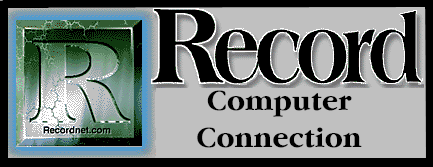

I can't think of another industry, except maybe the medical profession, that likes to confuse the public with acronyms and buzzwords more than the computer industry does. Acronyms are words formed from the first letters of a name like OPEC, Organization of Petroleum Exporting Countries, for example. Techies are notorious for making up words for lack of any better explanation or description for new hardware or technology. How can the average person master the terminology when these guys are making it up as they go along?
From your first computer outing, you sit down to an IBM PS/1 PC with 4 MB RAM, CD ROM, 120 MB HD, and MS-DOS. Huh? And this is only the basics! I firmly believe that this practice is by design to reinforce the general public's feelings of inadequacy and ignorance. This is self-preservation for those in-the-know at the top and keeps the rest of the masses in the dark, searching for the latest Compu-English translation book.
I first realized there was no big mystery to these invented terms when Tandy introduced it's first effort at the personal computer in 1977, called the TRS-80. Though it sounded high-tech and super-sonic, further research revealed the TRS merely stood for The Radio Shack. Commodore International, known for it's calculators, introduced it's first PC and called it the Commodore PET. Though officially this stood for Personal Electronic Transactor, it's developer said it was named after the Pet Rock, a popular fad at the time. In the early stages of it's development, the Macintosh was dubbed SAND for Steve's Amazing New Device, referring to it's developer Steven Jobs.
For the average user, a few acronyms are relevant and need deciphering. DOS is the Disk Operating System that acts as the bridge between your hardware and software making machines and programs by multiple manufacturers all compatible. Initials preceding DOS, like MS-DOS merely refer to the operating system developer, in this case Microsoft. The precursor of the present MS-DOS was called QDOS, Quick and Dirty Operating System.
Those who find DOS commands difficult to master may prefer to use a GUI (gooey) such as Windows. GUIs are Graphic Use Interfaces between the user and Operating System. Instead of typing DOS commands, you point and click on graphics or pictures to execute instructions. Most GUIs offer WSIWYG (wizzy-wig) screen fonts in their word processors. Don't be discouraged! This merely means What You See Is What You Get. NLQ fonts are Near Letter Quality when printed.
RAM is Random Access Memory, or the amount of active working space on your system. ROM is Read-Only Memory, usually instructions on computer chips or on compact discs, CD-ROM. A TSR refers to Terminate and Stay Resident program features which take up memory space even though you may not always be aware of them, like menus or an on-screen calculator that can be "popped- up" with a keystroke.
A bit is short for binary digit, the smallest unit of information in computing. 8 bits is equal to 1 byte. A single character like the letter A or number 1 is one byte. As always, two bits is a quarter, or a quarter byte. 1 MB is equal to roughly one million bytes. In user terms, a 1.4MB disk will hold about 500 pages of printed text.
ASCII, pronounced "ask-key" is the American Standard Code for Information Interchange. Your documents can be saved in this common code for conversion into other programs. Word Perfect, Word, and Works and others all provide for saving files as ASCII text. BASIC is a programming language that stands for Beginners All-Purpose Symbolic Information Code. Sounds more like a cooking flour!
Under the Help/Contents in Windows, you will find a basic glossary of terms for your reference. Barron's Business Guides publishes an excellent pocket size computer dictionary. There are also software programs, such as PC-Glossary, which offer definitions and examples. Do not be intimidated by this cryptic techno-talk. With a little detective work and occasional common sense, you can decipher this alphabet soup, making the whole process just a little more human and approachable.